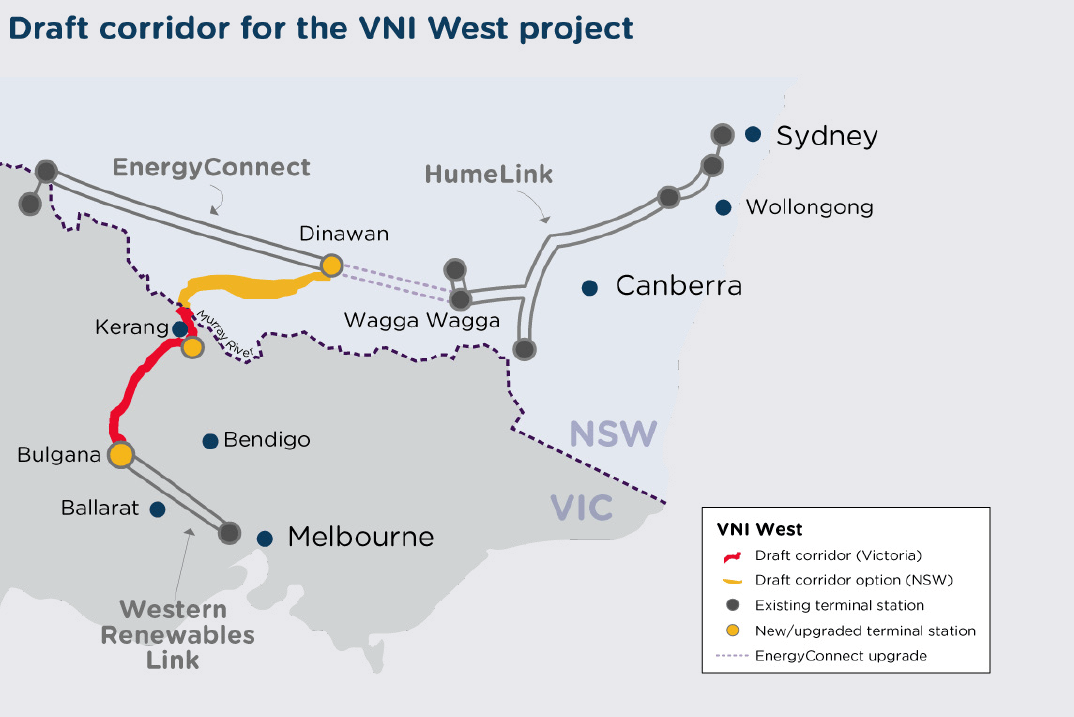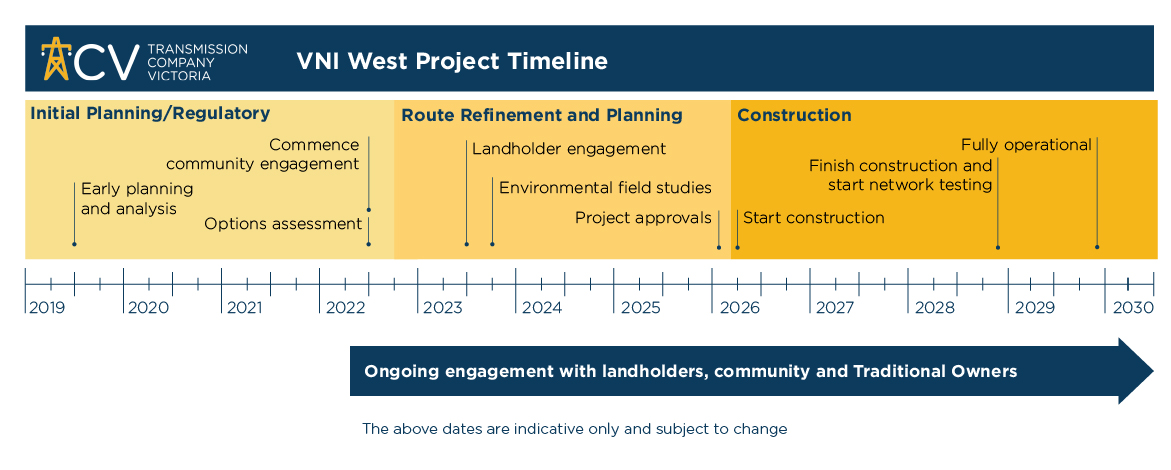Project Overview
VNI West is a project to build a new transmission line between Victoria and New South Wales.
It will harness clean, low-cost electricity from renewable energy zones (REZs) in both states and improve the reliability and security of electricity supply as ageing coal-fired power stations retire.
AEMO Victorian Planning (AVP) and Transgrid have completed the early planning and regulatory investment process for this proposed new high capacity 500 kV double-circuit overhead transmission line. It will run from Bulgana in Victoria to Dinawan terminal station in New South Wales, where it will connect to Western Renewables Link (WRL) via a new terminal station. The regulatory investment process establishes the business case for the project and confirms that the investment in VNI West, ultimately paid for by consumers, will deliver sizable economic benefits.
Why does Victoria need new transmission?
VNI West will harness renewable electricity from energy zones in both Victoria and New South Wales and improve the reliability and security of electricity supply. VNI West is needed because Australia’s ageing coal-fired generators are exiting the market after decades of great service. And more than that, their age and the economics of the electricity market are accelerating these closures.
The lowest cost replacement for this coal generation is renewable energy from the sun and the wind – backed up by batteries, gas and hydro to smooth the bumps in production.
Projects like VNI West will connect these new and diverse sources of electricity with Australian homes and businesses. Existing transmission cannot be relied upon, because the geographic location of generation has changed.
Who is delivering this project?
In the National Electricity Market (NEM), AEMO is responsible for planning and operating the electricity system and markets.
Under the rules for the NEM, each state has a transmission network service provider (TNSP) who is responsible for planning the transmission network. AEMO Victorian Planning (AVP) has that responsibility in Victoria, while Transgrid has that role in New South Wales.
Together, both companies have completed the regulatory investment test for VNI West with the publication of the Project Assessment Conclusion Report, which identifies the preferred area of interest for the project, supported by orders made by the Victorian Minister for Energy and Resources under the National Electricity (Victoria) Act 2005 (NEVA).
AEMO and Transgrid are jointly progressing VNI West, with Transgrid developing the New South Wales section and Transmission Company Victoria (TCV) leading the early works for the project in Victoria.
Timeline
TCV and Transgrid are committed to ongoing consultation and engagement for project development and delivery.
TCV has moved from the area of interest, which is 5–50 km wide to a draft corridor of approximately 2 km wide.
Ultimately, the draft corridor will be narrowed to an easement of approximately 100 metres.
TCV is committed to working closely with landholders, as well as Traditional Owners and communities in and around the draft corridor to find the best location for the final easement with the least impact on farming and communities.
Ecological surveys on public land commenced in October and aerial surveys of the draft corridor took place in November.
Field work is likely to continue for 12–18 months for VNI West as part of the comprehensive environmental assessment required under Government regulation.
Community consultation is an essential part of this process, and there will be ongoing opportunities for stakeholders and community members to make submissions and provide feedback.


